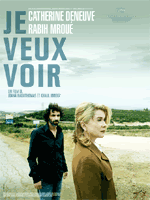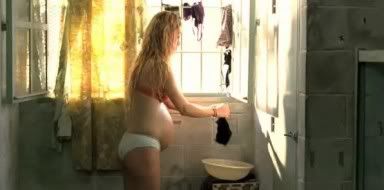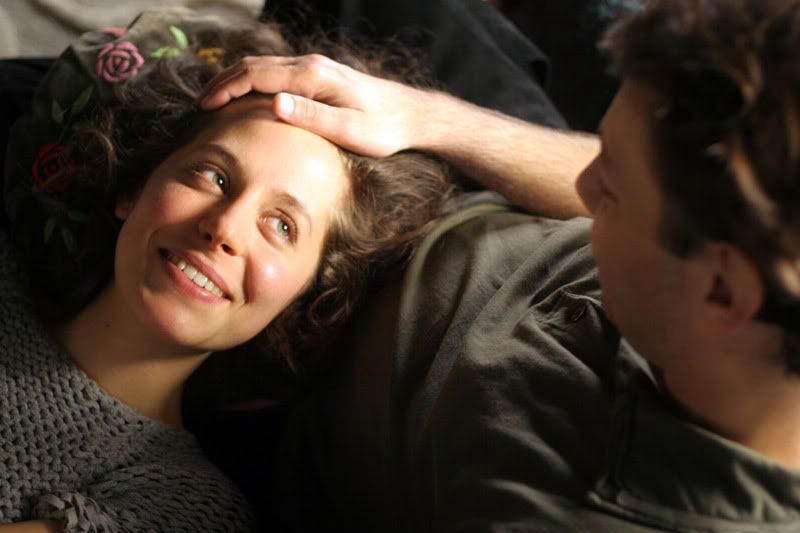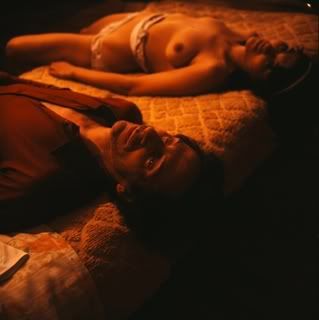-
The 2009 Miami International Film Festival

The 2009 Miami International Film Festival will take place from March 6th to March 15th at six venues throughout the city. The majestic 1400-seat Gusman Theatre, located in the downtown area, is the site where the opening and closing films are shown. The Awards Ceremony and the Career Achievement Tribute will also be held at the Gusman, as well as a number of Red Carpet events and screenings. Dramatic and Documentary features competing for awards usually receive three screenings at smaller venues located in Miami Beach, Little Havana and Coral Gables.
The Festival will show nearly 100 feature films from throughout the world, with a continued concentration on films from Latin America and Europe. The Miami festival has been hailed as the premiere showcase for Iberoamerican cinema in North America.
In 2009, the Festival will include a World Issues sidebar and a Cutting The Edge programme showcasing "provocative and sometimes extreme works that stand at the crossroads of video installations, boldly intersecting with other art disciplines". There will be 19 short films competing for cash awards, and a Preservation Screening Program consisting of restored prints of John Cassavetes' highly influential debut Shadows (1959) and his magnificent Faces (1968) starring Gena Rowlands. A program called Reel Music Scene will showcase music documentaries and videos.
Festival director Tiziana Finzi makes his debut this year. She was head of programming at the Venice Film Festival in the 1990s and programmer and director of the Locarno (Switzerland) Film Festival prior to her arrival in Miami. There are a number of apparent changes. The Miami festival has historically served, like the New York Film Festival, as a launching pad for U.S. distributors to showcase upcoming releases. This is no longer the case. There are very few films in this year's schedule that have distribution deals. Actually, the vast majority of the films in competition have never been exhibited in this country. The most important development is that the MIFF is placing even more emphasis on discovering new talent.
The recipient of the Career Achievement Award for 2009 is American iconoclast Abel Ferrara. The festival will exhibit seven of Mr. Ferrara's films. These include his undistributed Mary (2005), Go Go Tales (2007), Chelsea on the Rocks (2008) and his work-in-progress Mulberry St..
Let the films begin!
Last edited by oscar jubis; 03-06-2009 at 04:22 PM.
-

My 2009 Festival experience began with two strong contenders for Best Film in the World Cinema category. Paper Soldier, the new film by Aleksei German, Jr. had its world premiere at the 2008 Venice Film Festival where it received the award for Best Cinematography. German, Jr. received the festival's award for the Best Director. Paper Soldier is a revisionist, Russian version of Stanley Kaufmann's The Right Stuff. It's divided in six chapters corresponding to the six weeks preceding the launching of a manned rocket into space. In April of 1961, Yuri Gagarin became the first human being to reach outer space and the first to orbit our planet. This history recedes into the background of the narrative that matters in Paper Soldier. German, Jr.'s film focuses on Daniel, one of the doctors assigned to the mission candidates. One of his duties is to test the men's physical endurance and help decide who will be chosen for the mission. Daniel is conflicted regarding the motivations for the mission, the value of putting human life at grave risk, and the prevailing system of government in the Soviet Union. It's significant to note that Daniel's parents were once interned in Stalinist camps. Daniel's affective life is richly dramatized, as he finds himself torn between his lingering feelings for his ex-wife, also a doctor, and engaged in a budding relationship with a rather dependent younger woman. Paper Soldier conveys a gloomy feel largely as a result of a muted color palette and widescreen vistas of open fields covered with mud and snow. The script’s approach is decidedly Chekhovian in its emphasis on mood and atmosphere.
 Khamsa is a French feature set in a small Gypsy community on the outskirts of Marseilles, where director Karim Didri (Bye-Bye) immersed himself for over a year prior to shooting the film. The inherent commitment of such a lifestyle change pays huge dividends in that the film has an very authentic feel for place and magnificent, naturalistic performances by an ensemble of non-actors. The titular protagonist is a 13 year-old boy who has just escaped some type of residential institution where he was committed after (accidentally?) setting the trailer of his father's girlfriend on fire. His Muslim mother passed away years earlier and his father doesn't seem inclined to care for the boy. So Khamsa is vulnerable to a variety of influences. Among them his loyal friend Coyote, a purse-snatching Arab kid named Rachtique, and his cousin, a dwarf who makes a living training cocks for fighting. Films about barely pubescent boys facing the temptations of the streets and vulnerable to the violence involved are plentiful. Khamsa feels unique and freshly imagined because it pays close attention to the minutiae of milieu and strives to develop character specificity one scene at a time.
Khamsa is a French feature set in a small Gypsy community on the outskirts of Marseilles, where director Karim Didri (Bye-Bye) immersed himself for over a year prior to shooting the film. The inherent commitment of such a lifestyle change pays huge dividends in that the film has an very authentic feel for place and magnificent, naturalistic performances by an ensemble of non-actors. The titular protagonist is a 13 year-old boy who has just escaped some type of residential institution where he was committed after (accidentally?) setting the trailer of his father's girlfriend on fire. His Muslim mother passed away years earlier and his father doesn't seem inclined to care for the boy. So Khamsa is vulnerable to a variety of influences. Among them his loyal friend Coyote, a purse-snatching Arab kid named Rachtique, and his cousin, a dwarf who makes a living training cocks for fighting. Films about barely pubescent boys facing the temptations of the streets and vulnerable to the violence involved are plentiful. Khamsa feels unique and freshly imagined because it pays close attention to the minutiae of milieu and strives to develop character specificity one scene at a time.
Last edited by oscar jubis; 03-08-2009 at 02:07 PM.
-
The MIFF has had a strong selection of documentaries from around the world for the past decade or so. Lamentably, Face Addict and I Want to See don't quite uphold that tradition.

I Want to See, by Lebanese filmmakers Joana Hadjithomas and Khalil Joreige, is particularly disappointing, especially since it is a Cannes '08 selection. The great French actress Catherine Deneuve travels to Beirut to make an appearance at a film festival and a gala event or two. At home, she has watched TV news of the devastation of southern Lebanon caused by the conflict with Israel in 2006. She decides she wants to tour the area. The title of the film is very appropriate: she wants to "see". She grants the filmmakers a week. A convoy is organized led by Lebanese actor Rabih Mroue, who drives the iconic actress south towards the border, followed by bodyguards and crew in separate vehicles. We all get to "see" along with Deneuve but there's no attempt to understand or interpret what we see. The film becomes mostly a travelogue. There's beauty in devastation but there's something offputting about Deneuve, aristocratic airs and all, being trundled about to satisfy a curiosity that strikes me as only skin deep. Compelling moments such as Mroue's futile search for his grandmother's former house in a devastated village and his accidentally taking a side road that hasn't been declared free of mines are not enough to sustain interest.
Face Addict, Italian photographer Edo Bertoglio's nostalgic voyage back to the downtown Manhattan of the 70s and 80s is a more involving affair. Bertoglio made a name for himself as the house photographer for Andy Warhol's Interview magazine in the late 70s. His story is fairly familiar and well-documented though. He is the artistically-inclined youth who came to NYC in the 70s looking for opportunities for free expression, and flourished. The pop art, underground, and punk scenes in the city had plenty to offer to any talented young person. There were risks involved and Bertoglio succumbed to an addiction to heroin that nearly killed him. Indeed, most of the people he looks up died of addiction or AIDS. Among the survivors featured in Face Addict are Debbie Harry of Blondie, John Lurie of The Lounge Lizards (and a Jarmusch movie or two) and writer Viktor Bockris, who astutely places "the scene" to which they all belonged within the context of preceding and succeeding art movements. Most of this material has been covered by a series of documentaries and fiction features. However, Face Addict brightens considerably when it focuses on violinist and painter Walter Steding. He still lives in Greenwich Village and his optimism and generosity of spirit are contagious. Steding remains true to the ideas that shaped the movement while managing to keep the ghosts away.
Last edited by oscar jubis; 03-07-2009 at 11:38 AM.
-

Enrique Rivero wrote, directed, co-edited and co-produced his debut film Parque Via. It's a highly personal work by the 32 year-old former industrial engineer. Parque Via's protagonist is Beto, the live-in caretaker of his grandparents' rarely-visited country estate for the past 30 years. Long stretches of the film rigorously document Beto's housekeeping chores and ritualistic activities using fixed camera setups. Rivero overlays a simple fiction narrative atop this foundation. The ailing but elegant sexagenerian who owns the property, played by Rivero's mother, plans to sell it. The agony experienced by Beto when the real estate agent brings over potential buyers is conveyed economically via close-ups of a clenched fist or furrowed brow. Twice he ventures outside, to help "the lady" with the shopping. The cacophony of voices and noises in the soundtrack and the now mobile camera convey Beto's debilitating confusion and anxiety when away from his domain. Beto desperately wants life to stay the way it is. The sale of the home means the end of a way of life. Is there anything he can do to prevent it? Or will he find a new gilded cage?
The so-called "art cinema" shown mostly at film festivals and specialized markets has a thick branch devoted to films in which plot is a minimal construct; something vague, subtle and evanescent. The challenge is to find a conclusion that signifies and satisfies without betraying what precedes it. Rivero manages precisely that. Parque Via digresses from its unblinking focus on Beto only once. Rivero takes us inside a working-class bar where scantingly-clad women dance with old gents in exchange for a token. One of the women pays a weekly late-night visit to Beto for sex and a snack. Rivero provides a brief but rich alternative portrait of a proletarian caught in her own little, personal cage. The skill of the filmmaker in drawing complex characterizations using modest means are quite evident here.
Parque Via has won numerous awards at festivals worldwide. Most notably, the Golden Leopard and Fipresci award at the prestigious Locarno Film Festival in Switzerland.
-

Writer/director Mariana Chenillo's feature debut, Nora's Will (aka 5 Days Without Nora), is the type of pleasant, well-made film found at festivals that win audience awards. Often, these are the films that receive distribution deals and become available to the public-at-large.
Nora finally managed to kill herself after multiple attempts. Giving a proper burial to the Jewish matriarch is a complex affair because it's a suicide and because it's the day before Passover. As the title implies, the film is not about Nora but concerns the effect her death has on her loved ones. Particularly Moises, an atheist who was married to her for 30 years and remained her friend and neighbor for the next 20. Nora's Will is being billed as a "dark comedy" but it's mostly a drama with a sense of humor that springs out of the nature of being Jewish in Catholic Mexico, the friction between adherents to different branches of Judaism, and the posthumous discovery that Nora had an affair with Moises's best friend during their marriage. Kudos to Chenillo for her direction of actors and her own script's ability to find the humor intrinsic to situations rather than artificially manufacturing funny moments in ways that betray the nature of the characters and their reality. A common malady among ethnic comedies overly eager to tickle the funny bone.
The screening of Nora's Will at the MIFF is its American premiere. It would not surprise me if Chenillo leaves town with a distribution deal.
-

There's an exploitation subgenre dedicated exclusively to women in prison. Serious dramas exploring that environment are not that common. Leonera, the new film from Pablo Trapero (Mundo Grua, Geminis, Born and Bred) aims to fulfill that need. The English title to be used for the American theatrical release (Lion's Den) doesn't carry the implication that the film is set in a feminine milieu, and more specifically a maternal one. The film's opening is quite striking. A young woman wakes up to a messy crime scene in her apartment. She is charged with the death of her boyfriend and the stabbing of her boyfriend's male lover. When she's being admitted at the prison, we learn she's in the early stages of pregnancy. The bulk of Leonera concerns her placement in a wing earmarked for women with children up to 4 years old, then the children must be entrusted to relatives or placed in an orphanage until mother is released from jail. Whether Julia is guilty or the extent of her guilt is secondary to the relationships between the cellmates and Julia's mother's attempt to assume custody of Julia's boy when he is only two years old.
Leonera, which received good reviews when it played in competition at Cannes and was subsequently chosen as Argentina's submission to the Oscars, makes apparent that Trapero is a skillful classicist. This is narrative cinema with a clear beginning, middle and end, told chronologically, without flashbacks or temporal disruptions of any kind. This is realism in the service of creating a world-on-film that the viewer will find credible, without expressionistic effects, image manipulation, or experimentation with camera angles and lenses. It's an honest, straightforward telling of a story that hasn't been told. One that engages the viewer from first to last frame, with a flawed but sympathetic protagonist, and a resolute ending.
Leonera was appropriately screened at the Festival's Gala venue and the reaction from the audience of over 1000 was wildly enthusiastic. It would be unfair to conclude my review without pointing out the excellent, bold performance by Martina Gusman as Julia. Ms. Gusman has co-produced Trapero's last five features, including this one. Moreover, Trapero's ability to work seamlessly with a cast that includes established actors along with actual inmates and prison staff is quite commendable.
-

A WEEK ALONE (Argentina)
In Celina Murga's followup to her well-received Ana and the Others, two sisters go on a trip with the their husbands, leaving their 6 kids behind in their exclusive, gated community. The children, ages 6 to 16, are left under the care of Esther, a 23 year old maid from Murga's province of Entre Rios. The crisis is precipitated by a visit from Esther's teenage brother Juan. After a long process at the gate, the security detail sanctions his visit. He is regarded with curiosity by the girls and as an object of scorn by the two oldest boys. With great skill and subtlety, Murga intimates that the potential of an affair between Juan and Maria, the oldest girl, fuels feelings of jealousy on the part of Maria's cousin. As well as her brother's sense of entitlement and superiority, something that might be characteristic of the class to which he belongs.
The ensemble work by the youthful cast is excellent, something for which Ms. Murga deserves substantial credit. She is yet another of the highly accomplished new generation of filmmakers emerging in Argentina. She shares with Martel and Alonso a distrust of melodrama and definitive endings. Yet, in this film, the elliptical conclusion seems more like an easy way out than a daring way to offer the possibility of multiple interpretations. Part of the problem is the sketchy depiction of the character of Juan. Perhaps what Murga is suggesting here is that Juan is wise beyond his years and that the best strategy when the rich exercise their power to repress is to keep your cool and don't make too much of a fuss.
-

MARCH (Austria)
This film written and directed by Klaus Handl, his debut, opens with three men's silent, almost ritualistic suicide by asphyxiation on the eve of their 30th birthday. There's no note left behind and no apparent reason behind their decision. March could have been a psychological mystery but chooses to focus on the feelings of guilt and the grief process of the dead men's friends and family. Handl introduces multiple characters at the outset and the narrative structure makes it difficult at first to discern how they are related. The film features impeccable visuals, outstanding sound design and superb ensemble acting. However, Handl regards the characters at such a remove that March generates interest only at the sociological level with minimum emotional impact on the viewer. March received the prize for Best First-feature at the Locarno Film Festival.
-

I'M GONNA EXPLODE (Mexico)
Third feature by writer/director Gerardo Naranjo evidences artistic growth. Naranjo's favorably received Drama/Mex juggled multiple threads with inconsistent results. I'm Gonna Explode maintains that film's wonderfully breezy, jiggly hand-held camera style which somehow manages to remain attentive to the visual composition of the images. The new film moves the action from Acapulco to the picturesque town of Guanajuato and centers on a single narrative.
Roman, the son of a local, right-wing politico, having been expelled from yet another high school, introduces himself to his new classmates via a performance sketch in which he mocks suicide-by-hanging. He is introduced to us through the diary entries of Maru, the girl who has a special affinity with Roman and becomes his friend-cum-girlfriend. The duo run away but only as far as the roof of Roman's well-appointed home, where they pitch a tent and build a world of their own. His father organizes a search. The rebellious Roman calls the family to provide false clues as to their whereabouts so the couple can sneak into the house for food and other essentials. They leave the roof to attend a 15th birthday party in a nearby town and to visit an intellectual, leftist former college buddy of Roman's father. Throughout their adventure, Roman and Maru negotiate the sexual parameters of their budding relationship and the notion of engagement with a world that feels alien and repellent to them.
I don't know if Naranjo has seen Rebel Without a Cause but the parallels between his film and Nicholas Ray's classic abound. Naranjo obviously feels affection towards his characters and empathy towards their swagger and angst. Two highly suggestive scenes: Roman's father insists on watching a televised soccer game after he's been declared missing and his stepmother discovers their hideout but fails to alert anyone. The kids are suffering from neglect and inattention, Naranjo seems to suggest, and they're smart enough to see through the hypocrisy of the adult world. All that is fine if not quite original. Naranjo goes wrong only when introducing elements of violence into the narrative which remain, in my opinion, insufficiently motivated and somewhat gratuitous. Juan Pablo de Santiago and Maria Deschamps, in the lead roles, have no previous acting experience. Both are quite good here, with Deschamps displaying a wider performative range and great potential as an actress.
-

LOVELY LONELINESS (Argentina)
The best American movies of the 1930s were romantic comedies, mostly helmed by foreign-born directors like Lubitsch and Capra. Movies such as It Happened One Night, Holiday, and Trouble in Paradise. This mixture of romance and comedy continues to attract large audiences in every corner of the world. However, they have rarely approached the greatness of their 1930s counterparts.
This argentine sample of the popular genre, co-directed by Martin Carranza and Victoria Galardi and scripted by the latter, is quite winsome. Soledad, a twentysomething co-owner of an interior design shop, has her heart broken by her live-in, musician boyfriend. She decides what's best for her is to remain unattached for a couple of years as to avoid romance's ups and downs. Then she meets a young architect that pursues her relentlessly. Will she be able to resist falling in love again?
It's a simple plot that has great appeal because most viewers have been in Soledad's situation at one time or another. The success of such a film depends greatly on the skill with which the script depicts the protagonist and builds a world around her and the special qualities of the actress cast in that role. In Lovely Loneliness, Girardi's script and the performance by Ines Efron never falter. Efron, who's built quite a reputation playing troubled teens (XXY, Glue, etc.) steps into her first adult role with complete assurance and demonstrates her ample range as an actress. Her Soledad is uniquely charming, poised yet vulnerable, and goofy in a very endearing manner. The character's hypochondria, which includes an obsession with medical devices like digital blood pressure readers and the distance between her apartment and health facilities, is keenly used as comic fodder. Secondary characters like her gay business partners, her severe concierge, and her aging-defying mother are concisely but memorably sketched.
Lovely Loneliness stumbles only in the scenes that include Nico, the architect that just might extricate Soledad from her self-imposed solitude. He's tight-lipped, and lacks the charm and looks to convince us Soledad could fall for him. Or to makes us wish she did. Where is the new Cary Grant or Clark Gable? Some of their masculine charisma is sorely needed in this picture. However, Ines Efron, with her big blue eyes and expressive face, gives a performance big enough to make Lovely Loneliness a delightful experience.
-

AFTERSCHOOL (USA)
When this debut feature written, directed and edited by Roberto Campos got accepted for exhibition at the 2008 Cannes Film Festival, he achieved the dream of film students everywhere. Campos, who is now 25 and whose previous films (shorts) were well received in the festival circuit, managed subsequently to have Afterschool shown by the selective New York Film Festival. One of the producers (who punctuates every other sentence with "fuck" and "shit") told the MIFF audience that they've turned down US distribution deals (including an offer from IFC Films) because they want wide distribution for the film.
Afterschool focuses on Rob, a nerdy, web-obsessed, porn-watching but virginal 10th grader who accidentally films the death of twin girls in their posh Connecticut boarding school. The girls die from ingestion of a poison-laced drug that might have been sold by Rob's roommate. It's actually not known where the drugs came from but the principal informs students and parents that they were obtained outside the confines of the school. Rob loses his virginity with the girl who is assigned to partner with him in shooting a memorial video. Rob's behavior during sex mimics the sadomasochistic porn video he's watching during the film's opening scene. The therapist strives to get Rob to open up but behaves in a way that suggests he is untrustworthy. His mother exhorts him by phone to take psychotropics rather than discuss his problems with her. As Ed Gonzalez stated in Slate magazine, "you wonder if this is all Campos is after: conveying in Van Santian terms how the YouTube generation is indoctrinated into the Prozac Nation."
Afterschool doesn't have much new to say and the characterizations are not sufficiently developed to be integrated into a satisfying drama. The title, an ironic allusion to the type of didactic, tame, "afterschool specials" made-for-TV, is indicative of Campos' aim to be bold and shocking in a manner reminiscent of Haneke's Benny's Video. Like Gonzalez, I "wonder if this is all Campos is after". What makes Afterschool well...special is the fusion of images produced by digital video and cell phone cameras into a film shot in 35 mm. so that one understands how Rob's generation is unique in their engagement with visual media. The eerie sense that everyone in the world of Afterschool is almost constantly both a voyeur and an object of surveillance is conveyed with great skill by means of framing and image composition. Overall, an interesting debut.
-

KISSES (Ireland)
Pre-teens Dylan and Kylie live next door in a drab, working-class suburb of Dublin. Kylie helps Dylan escape from the clutches of his alcoholic Da shortly after we see the plucky girl hide from a predatory uncle. The abusive and oppressive environment is rendered in black&white. The kids run towards the river where they insists on boarding a barge comandeered by an immigrant who idolizes Bob Dylan. Kisses switches to color as the barge sails towards downtown Dublin. While searching for Dylan's runaway older brother, the kids experience the joys and perils of city life. There's a little romance, a little danger, and an encounter with a Bob Dylan impersonator played by an uncredited Stephen Rea, who had the lead role in writer/director Lance Daly's previous film: The Halo Effect.
Nothing earthshattering here. Just a perfectly realized, heartfelt ode to youth, to freedom, and to the type of bond forged by people that can transcend whatever ails us. Wonderful job of casting newcomers Shane Curry and Kelly O'Neil and directing their captivating performances. Daly's moving homage to the greatest American singer-songwriter is an added bonus to fans like me. Kisses won the top prize at the Galway and Foyle film festivals.
-

TONY MANERO (Chile)
Manero is the world-famous character played by John Travolta in Saturday Night Fever. Raul, a 52 year-old thief from Santiago, is obsessed with him. Ricardo Larrain's second film is set during the week leading to Raul's appearance on a televised Manero impersonator contest. The time is, of course, the late 70s when Chile is under the grip of the Pinochet dictatorship. Raul assists an old woman who's just been robbed and, once inside her apartment, bludgeons her to death and takes her color tv. Did her comments about Pinochet's "pretty" blue eyes and Mapuches (Chile's indigenous group) being a "bad race" provoke him? No, we soon learn that Raul kills without compunction to get whatever he wants and the cops don't care. They are solely concerned with stamping out any sign of political resistance.
If movies are vessels to worlds to which we don't have access or windows that give us views of them, Tony Manero takes us where we've never been. Raul's pathetic little kingdom is a dingy 3-table luncheonette with a raised wooden platform in the back for dancing and performing. A fat matron who does the cooking, a younger woman and her teenage daughter, and an ineffectual young man acquiesce to the somber and dominant Raul. They rehearse for a weekly show they put on as Raul prepares for the contest and strives to replace the creaky platform with a glass one, lit from below like the one in Travolta's film.
A viewer could regard Tony Manero simply as character study set at a specific historical moment but most will probably draw a number of parallels Larrain seems to be encouraging us to make. Two strike me as particularly compelling. Pinochet and Raul are both amoral murderers who act with impunity and, secondly, Raul's sexual impotence mirrors the Chilean people's inability to present a unified front capable of ousting the dictator. Moreover, Raul's adoption of a foreign celluloid hero to emulate implies a loss of native identification figures at a time that Pinochet was importing American socioeconomic models ill-suited to serve Chile's needs.
Larrain serves up this pathetic psychopath of a character that somehow_ is it because of his fierce drive to succeed and/or the social context?_I couldn't hate. Ultimately, what makes Tony Manero particularly resonant is the rich interplay between its dramatic text and the sociopolitical context.
Last edited by oscar jubis; 03-16-2009 at 08:49 PM.
-


FILMEFOBIA (Brazil)
Many in the audience came under the impression they would watch a documentary about phobic people. The placement of FilmeFobia within the festival guide immediately following the "Dox" section perhaps contributed to the confusion. It's actually a "Cutting the Edge" sidebar selection described as "Kiko Goifman's fictional making-of a documentary that explores people's irrational fears in the intimate environment of a film set". That's accurate albeit not entirely clear because it's a film that has few if any antecedents. And because the crew of the film-within-a-film are playing unscripted versions of themselves, and one cannot tell whether any "phobic" is an actor or someone with a real phobia who volunteered to face it for the cameras.
The "director" is Jean-Claude played by Belgian-Brasilian intellectual Jean-Claude Bernardet and he believes that "the only truly real image is that of a phobic facing his fear". So FilmeFobia shows us people with common (rats, snakes, blood,needles,etc.) and weird (dwarfs, penises, water drains, pigeons,etc.) phobias confronting them in extreme setups (while naked and tied up, for instance) solely for the purpose of imagemaking. Perhaps the experience is therapeutic or damaging to the subject, but that is of no concern to Jean-Claude or Kiko Goifman.
However narrowly focused, FilmeFobia is not insubstantial. The phobic "takes" are interspersed with scenes of Jean-Claude and crew discussing the morality of their endeavor and topics such as the etiology and psychological underpinnings of fear. However, there's nothing in FilmFobia that reflects what's written in Goifman's director statement about the political uses of fear-mongering. FilmeFobia is a most provocative but not entirely successful transgressive film that blurs the lines between fiction and documentary. It won four awards at the Brasilia Film Festival.
Last edited by oscar jubis; 03-17-2009 at 02:56 PM.
-

GALANTUOMINI (Italy)
Ignazio returns to his native Apulia to attend the funeral of Fabio, who died of a drug overdose. He reunites with childhood sweetheart Lucia and sparks fly. Ignazio, an upright judge, gradually learns that Lucia's perfume shop is a front for organized crime and that the father of her 7 y.o. son is a feared heroin dealer. This effective crime melodrama directed by Edoardo Winspeare is memorable only because of the passionate and soulful performance by Donatella Finocchiaro, who won the Best Actress award at the Rome International Film Festival.
 Posting Permissions
Posting Permissions
- You may not post new threads
- You may not post replies
- You may not post attachments
- You may not edit your posts
-
Forum Rules





 Reply With Quote
Reply With Quote
 Khamsa is a French feature set in a small Gypsy community on the outskirts of Marseilles, where director Karim Didri (Bye-Bye) immersed himself for over a year prior to shooting the film. The inherent commitment of such a lifestyle change pays huge dividends in that the film has an very authentic feel for place and magnificent, naturalistic performances by an ensemble of non-actors. The titular protagonist is a 13 year-old boy who has just escaped some type of residential institution where he was committed after (accidentally?) setting the trailer of his father's girlfriend on fire. His Muslim mother passed away years earlier and his father doesn't seem inclined to care for the boy. So Khamsa is vulnerable to a variety of influences. Among them his loyal friend Coyote, a purse-snatching Arab kid named Rachtique, and his cousin, a dwarf who makes a living training cocks for fighting. Films about barely pubescent boys facing the temptations of the streets and vulnerable to the violence involved are plentiful. Khamsa feels unique and freshly imagined because it pays close attention to the minutiae of milieu and strives to develop character specificity one scene at a time.
Khamsa is a French feature set in a small Gypsy community on the outskirts of Marseilles, where director Karim Didri (Bye-Bye) immersed himself for over a year prior to shooting the film. The inherent commitment of such a lifestyle change pays huge dividends in that the film has an very authentic feel for place and magnificent, naturalistic performances by an ensemble of non-actors. The titular protagonist is a 13 year-old boy who has just escaped some type of residential institution where he was committed after (accidentally?) setting the trailer of his father's girlfriend on fire. His Muslim mother passed away years earlier and his father doesn't seem inclined to care for the boy. So Khamsa is vulnerable to a variety of influences. Among them his loyal friend Coyote, a purse-snatching Arab kid named Rachtique, and his cousin, a dwarf who makes a living training cocks for fighting. Films about barely pubescent boys facing the temptations of the streets and vulnerable to the violence involved are plentiful. Khamsa feels unique and freshly imagined because it pays close attention to the minutiae of milieu and strives to develop character specificity one scene at a time.















Bookmarks